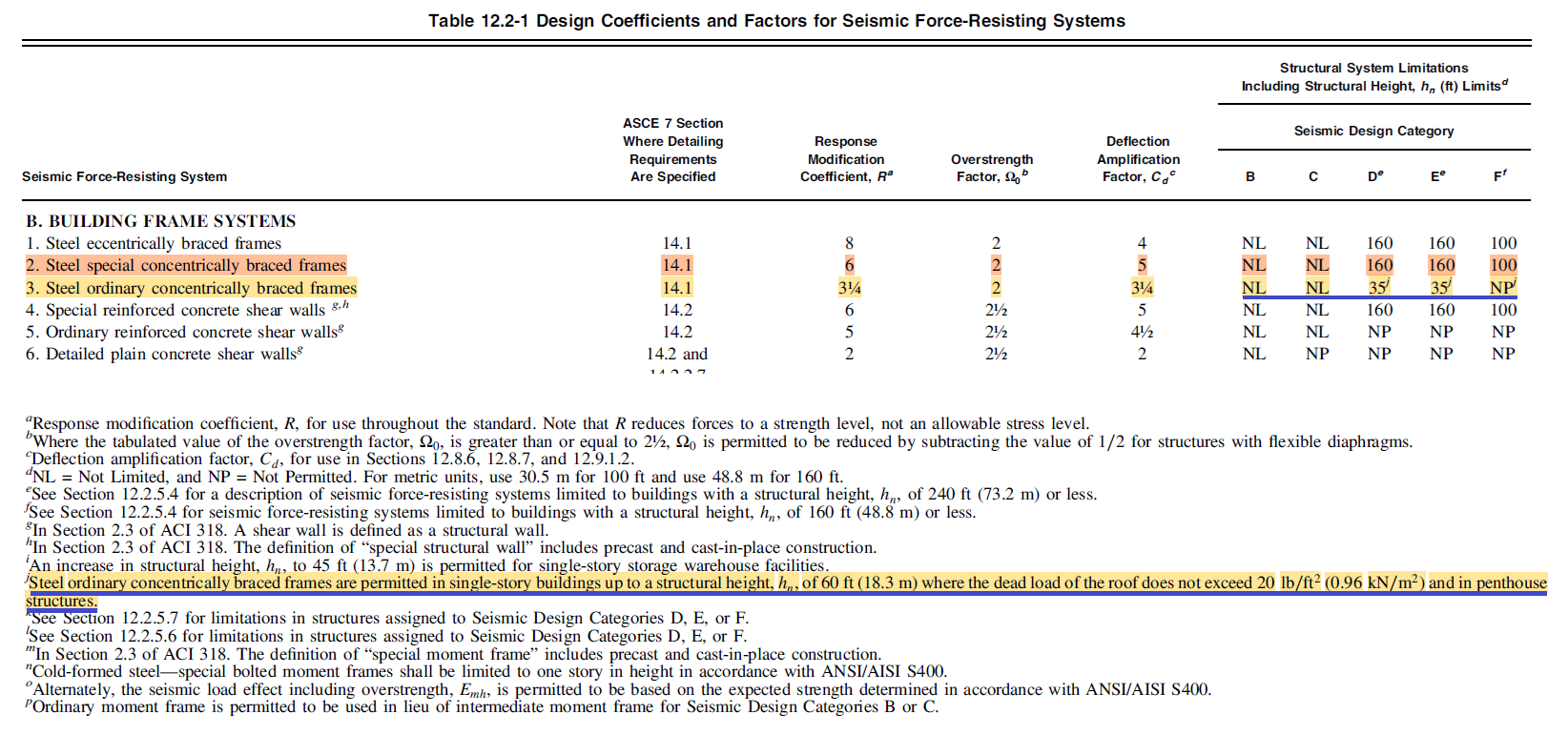14- Tension-Only Bracing
Tension-only bracing systems utilize steel in its most efficient structural role, resisting axial tension, which enables significant material savings compared to compression-based systems. The bracing members in such systems are typically slender elements. Due to their minimal cross-sectional area, their compressive strength is negligible, and they are neither intended nor designed to resist compressive forces.
Since all braces are assumed to carry tension only, lighter and more slender members can be used, resulting in significant material savings. To support this approach, MkaPEB offers users the option to model braces as tension-only members. However, some engineers argue that the use of tension-only bracing is permissible only in non-seismic and low-wind zones.
This issue is addressed in the following section, based on the Seismic Provisions for Structural Steel Buildings (July 12, 2016), published by the American Institute of Steel Construction.
Special Concentrically Braced Frames (SCBF)
Special Concentrically Braced Frames (SCBF) provisions have not been developed for use with braces that only act in tension.
Thus tension-only braced frames are not allowed for SCBF. Tension-only bracing is allowed for OCBF.

Ordinary Concentrically Braced Frame (OCBF)
Diagonally braced frame meeting the requirements of Section F1 in which all members of the braced-frame system are subjected primarily to axial forces.
Braces shall satisfy the requirements of Section D1.1 for moderately ductile members. (TABLE D1.1 Limiting Width-to-Thickness Ratios for Compression Elements for Moderately Ductile and Highly Ductile Members). Exception: Braces in tension-only frames with slenderness ratios greater than 200 need not comply with this requirement.
Limitation in Use of Ordinary concentrically braced frame (OCBF)

As presented in figure above, about the use of OCBF:
there is Not Limitation (NL) to use OCBF for seismic design categories B and C,
the building height must be limited to 35 ft for seismic design categories D, and E,
using OCBF is Not Permitted (NP) for seismic design category F.
However, according to superscript j presented in figure above, even in seismic design categories D, E, and F, the use of OCBF are Permitted with No Limitation for:
Single-story buildings up to a structural height, of 60 ft (18.3 m) where the dead load of the roof does not exceed 20 lb∕ft2 (0.96 kN∕m2)
Allowance for the Use of Tension-Only Braces
In many pre-engineered buildings, the above mentioned condition is satisfied; therefore, the buildings can be designed using the OCBF system. Subsequently, the use of tension-only bracing is permitted in these buildings.
Tension-Only Brace Option in MkaPEB
In accordance with building design codes and following global construction practices, MkaPEB provides users with the option to model bracing as tension-only members.

Created with the Personal Edition of HelpNDoc: Streamline Your CHM Help File Creation with HelpNDoc